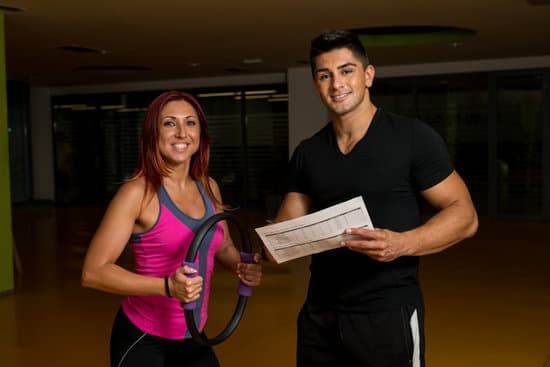Welcome to the exciting world of the February Fitness Challenge Swimming. In this blog post, we will be setting the tone for your month-long fitness journey, highlighting the benefits of swimming as the challenge activity. Whether you are a seasoned swimmer or a beginner, this challenge will provide you with an opportunity to enhance your overall fitness and well-being through the power of swimming.
February fitness challenges have become increasingly popular in recent years as a way to kickstart a healthy lifestyle. The month itself can sometimes feel long and uninspiring, but by committing to a fitness challenge, you can inject a sense of excitement and determination into your daily routine. And what better way to do that than by diving headfirst into the invigorating world of swimming?
Swimming is not only a refreshing and enjoyable activity but also one that offers numerous benefits for your physical and mental health. It engages multiple muscle groups, providing both strength and cardiovascular training. Moreover, swimming is low-impact, making it suitable for people of all ages and fitness levels. So whether you want to tone your muscles, improve your endurance, or simply enjoy some time away from everyday stressors, swimming has got you covered.
So get ready to dive in and make a splash on your February fitness journey. In the following sections of this blog post, we will guide you through setting goals for the challenge, preparing effectively, designing an efficient training plan, incorporating variety into your swimming routine, staying motivated throughout February, overcoming obstacles along the way, celebrating success at the end of the challenge, and maintaining a healthy lifestyle beyond February.
Are you excited? We certainly hope so. Let’s jump right into this adventure together as we explore how swimming can transform not just our bodies but also our outlook on life.
Benefits of Swimming for Fitness
Swimming is not only a fun and refreshing activity, but it also offers numerous benefits for fitness. Whether you are a beginner or a seasoned athlete, incorporating swimming into your fitness routine can significantly improve your overall health.
First and foremost, swimming engages multiple muscle groups in the body. Unlike other forms of exercise that may focus on specific areas, swimming requires the use of both upper and lower body muscles. The constant resistance of the water helps to tone and strengthen muscles throughout the entire body, including the arms, shoulders, core, back, hips, and legs. This makes swimming a great full-body workout that can promote muscle definition and increase overall strength.
Another benefit of swimming is its low-impact nature. The buoyancy of water reduces the impact on joints and bones, making it suitable for individuals with joint pain or those recovering from injuries. Swimming allows for increased range of motion without putting excessive strain on the body. This low-impact characteristic also makes it an ideal exercise option for individuals with conditions such as arthritis or osteoporosis.
Moreover, swimming is a great cardiovascular exercise that can improve heart health and increase lung capacity. It helps to improve circulation and boost endurance over time. Regular swimming sessions can lead to improved cardiovascular fitness levels and contribute to maintaining a healthy heart.
To summarize, swimming offers multiple benefits for fitness. It engages various muscle groups in the body while providing a low-impact workout that is suitable for all fitness levels. Additionally, swimming improves cardiovascular health and endurance. So whether you are looking to lose weight, tone your muscles, or improve your overall well-being, diving into a challenge that incorporates swimming can be an excellent choice.
| Benefits | Details |
|---|---|
| Muscle engagement | Engages multiple muscle groups in the body |
| Low-impact | Reduces strain on joints and bones |
| Cardiovascular fitness | Improves heart health and lung capacity |
Setting Goals for the February Fitness Challenge
As you embark on your February fitness challenge of swimming, it is important to set realistic goals that will keep you motivated and engaged throughout the month. Setting goals can help provide a sense of direction and purpose, as well as give you something to strive towards. Here are some tips to help you set effective goals for the challenge:
Firstly, consider what you hope to achieve with this fitness challenge. Are you looking to build strength, improve cardiovascular fitness, or simply have fun while getting active? Identifying your main objective will help guide your goal-setting process.
Next, think about how you will measure your progress. This could be done through tracking time spent swimming, distance covered, or even laps completed. Choose a method that aligns with your overall objective and motivates you to push further.
To make your goals more achievable, it’s helpful to break them down into smaller milestones. For example, if your ultimate goal is to swim 1 mile without stopping by the end of February, start by setting an initial milestone of swimming for 10 minutes without a break and gradually increase it over time.
Remember to keep your goals challenging yet attainable. Setting unrealistic expectations can lead to frustration and disappointment if not achieved. By breaking down your larger goal into smaller attainable milestones, you’ll experience a sense of accomplishment along the way.
Preparing for the February Fitness Challenge
Importance of Warming Up and Stretching
Before diving into the February Fitness Challenge swimming journey, it is important to prioritize your safety and well-being. One crucial aspect of preparing for any physical activity is warming up and stretching. By taking a few minutes to warm up your muscles and stretch, you can prevent injuries and maximize your performance in the water.
Start with some light cardio exercises such as jogging or jumping jacks to increase your heart rate and get your blood flowing. This will prepare your body for the upcoming swim session. After completing a brief warm-up, move on to stretching key muscle groups used in swimming, including the shoulders, arms, legs, and core.
Choosing the Right Swimwear and Gear
To fully enjoy the February Fitness Challenge swimming experience, it is essential to have the appropriate swimwear and gear. First and foremost, find a swimsuit that fits you comfortably and allows for ease of movement in the water. Look for materials that are durable yet flexible, ensuring that they can withstand frequent use.
In addition to a swimsuit, consider including other swimming gear such as goggles, a swim cap, and earplugs if necessary. Goggles will protect your eyes from chlorine or saltwater while improving visibility underwater. A swim cap can not only streamline your movements but also help protect your hair from the harsh chemicals in pool water or saltwater.
Finding a Suitable Swimming Facility or Location
To make the most of the February Fitness Challenge swimming journey, it is important to find a suitable swimming facility or location that meets your needs. Depending on where you live, there may be various options available such as public pools, private fitness clubs with swimming facilities, or open-water locations like lakes or beaches.
Consider factors such as accessibility, cleanliness of the facility or location, availability of lanes for lap swimming if desired, and any additional amenities that may enhance your swimming experience. Some pools or facilities may offer swim lessons, group classes, or even master swim programs, which can provide additional motivation and support during your challenge.
By taking the time to prepare yourself physically and finding a suitable swimming environment, you will lay a strong foundation for success in the February Fitness Challenge swimming journey. Remember to always prioritize safety and enjoy the process of improving your fitness through swimming.
Designing an Effective Training Plan
Designing a structured and effective training plan is essential for success in the February Fitness Challenge swimming journey. Having a well-designed plan will not only help you track your progress but also ensure that you are consistently challenging yourself and making improvements. Here is a sample training plan to get you started:
Beginner Level
- Week 1: Start with three days of swimming for 20 minutes each session. Focus on building endurance and getting comfortable in the water.
- Week 2: Increase to four days of swimming for 25 minutes each session. Incorporate different strokes such as freestyle and backstroke.
- Week 3: Swim five days a week for 30 minutes each session. Begin incorporating interval training, alternating between high-intensity sprints and low-intensity recovery periods.
- Week 4: Maintain five days of swimming, but increase the duration to 35 minutes per session. Work on improving technique and efficiency in your strokes.
Intermediate Level
- Week 1: Swim five days a week for 40 minutes each session. Include drills to improve stroke technique and focus on speed intervals.
- Week 2: Increase the duration to 45 minutes per session. Add resistance training exercises outside of the pool to build strength.
- Week 3: Maintain five days of swimming at 45 minutes, but add in one day of longer distance swims (e.g., swim continuously for one mile).
- Week 4: Gradually increase the intensity by incorporating pyramid sets, where you progressively increase and then decrease your effort.
Advanced Level
- Week 1: Swim six days a week, alternating between endurance workouts (50-60 minutes) and high-intensity interval training sessions (30-40 minutes).
- Week 2: Incorporate open water swims or join a masters swim group for added challenge and variety.
- Week 3: Implement specific workouts focusing on race pace and technique refinement.
- Week 4: Taper down the training intensity to allow for recovery before any upcoming events or competitions.
Remember to always listen to your body and modify the plan as needed. Consistency is key, but it is also important to allow for rest and recovery days. By following a well-designed training plan, you will maximize your results during the February Fitness Challenge swimming journey.
| Training Level | Sample Training Plan |
|---|---|
| Beginner Level | – Week 1: Start with three days of swimming for 20 minutes each session. Focus on building endurance and getting comfortable in the water.
|
| Intermediate Level | – Week 1: Swim five days a week for 40 minutes each session. Include drills to improve stroke technique and focus on speed intervals.
|
| Advanced Level | – Week 1: Swim six days a week, alternating between endurance workouts (50-60 minutes) and high-intensity interval training sessions (30-40 minutes).
|
Incorporating Variety into the Swimming Routine
One of the keys to staying motivated and committed to your February fitness challenge swimming journey is to incorporate variety into your swimming routine. While swimming itself is a fantastic full-body workout, doing the same strokes and routines day after day can become monotonous and lead to boredom. By mixing things up, you can not only keep yourself engaged, but also work different muscles and improve your overall swimming technique.
One way to add variety to your swimming routine is by experimenting with different strokes and techniques. In addition to the classic freestyle stroke, consider incorporating other strokes such as backstroke, breaststroke, or butterfly. Each stroke targets different muscle groups and can help prevent muscle imbalances.
Another way to add variety is through interval training. Interval training involves alternating between high-intensity intervals and lower-intensity recovery periods. This type of training not only helps improve cardiovascular fitness but also increases calorie burn. To incorporate interval training into your swimming routine, try doing sets where you swim at a fast pace for a certain distance or time, followed by an equal or longer period of rest or slower-paced swimming.
In addition to different strokes and interval training, there are various workout formats you can try to mix things up. Pyramid sets, for example, involve gradually increasing then decreasing the intensity or distance of each set within a workout. This helps challenge your body in different ways and keeps you engaged mentally as well.
Another option is circuit training in the water, where you move from one exercise or station to another without much rest in between. This type of training adds an element of resistance and strength work to your swimming routine.
Lastly, incorporating swimming drills into your routine can not only help improve your technique but also provide variety and challenge. There are many drills that target specific aspects of swimming such as breathing technique, body position, or arm movements. Watching how-to videos on proper drill execution can be helpful in ensuring that you are performing them correctly.
By incorporating variety into your swimming routine, you can not only keep yourself motivated and engaged but also work different muscles and improve your overall swimming performance. Experiment with different strokes, try interval training or different workout formats, and incorporate swimming drills into your routine.
Remember to listen to your body and adjust the intensity and duration of each workout based on your fitness level and goals. With a varied and exciting swimming routine, you’ll be well on your way to conquering your February fitness challenge.
Tips for Staying Motivated throughout February
Staying motivated is crucial for successfully completing the February Fitness Challenge Swimming. Here are some tips to help you stay motivated and committed throughout the month:
- Set Realistic Mini-Goals: Break down your overall goal for the challenge into smaller, achievable milestones. For example, if your ultimate goal is to swim a certain distance by the end of the month, set mini-goals for each week or even each swim session. Celebrate and reward yourself when you reach these mini-goals to keep up your motivation.
- Find an Accountability Partner: Consider finding a buddy or joining a support network to help keep you motivated and accountable during the challenge. Share your goals with someone who can offer encouragement and cheer you on throughout your journey. Having someone to share your progress with can make all the difference in staying motivated.
- Track Your Progress: Keep a record of your swimming sessions, noting the distances covered, laps completed, or time spent in the water. Seeing tangible evidence of your progress can be incredibly motivating and will serve as a reminder of how far you’ve come in achieving your goals.
- Mix Up Your Routine: To avoid getting bored with your swimming routine, incorporate variety into your workouts. Try different swimming strokes and techniques to challenge yourself and keep things interesting. You can also experiment with interval training or different workout formats such as pyramid sets to add excitement and intensity to your sessions.
- Utilize Swimming Drills and Videos: Incorporate swimming drills into your routine to improve technique and prevent monotony. There are many resources available online that provide step-by-step instructions or video demonstrations of various drills that target specific areas of swimming technique. By continuously working on refining your skills, you’ll stay engaged and motivated throughout February.
Remember, motivation may fluctuate throughout the challenge, but by implementing these tips, you can keep yourself focused on reaching your goals. Stay positive, celebrate small victories along the way, and don’t be afraid to lean on others for support and encouragement. With perseverance and determination, you’ll successfully complete the February Fitness Challenge Swimming.
Overcoming Challenges and Possible Setbacks
Acknowledge the Potential Difficulties
Completing a fitness challenge, such as the February Fitness Challenge Swimming, can be tough. It’s important to acknowledge and prepare for the potential challenges and setbacks that may come your way. One common difficulty is finding time to fit swimming into your schedule. With work, family, and other commitments, it can be challenging to carve out dedicated time for swimming. However, by prioritizing your health and making a plan, you can overcome this obstacle.
Another challenge is maintaining motivation throughout the month-long challenge. It’s natural for enthusiasm to wane as the days go by, but there are strategies to stay motivated. Setting small goals along the way can help keep you engaged and provide a sense of accomplishment. Breaking down larger goals into smaller milestones can make them more manageable and prevent overwhelm.
Tips for Overcoming Common Swimming Challenges
Swimming also presents its own unique set of challenges. Breathing technique is crucial in swimming efficiently, but it can take time to master. Many beginners struggle with breathing while swimming and may feel uncomfortable or out of breath. To overcome this challenge, it’s important to focus on proper breathing techniques and practice regularly in order to build endurance.
Additionally, some individuals may have a fear of water or be uncomfortable in deep pools or open water settings. If this sounds like you, it’s essential to address these fears head-on. Consider taking swimming lessons or working with an instructor who specializes in helping individuals overcome their fear of water. Gradual exposure combined with expert guidance can help alleviate anxiety and build confidence in the water.
Injury Prevention and Stress Management
In any fitness challenge, there is always a risk of injury if proper precautions are not taken. To minimize this risk while participating in the February Fitness Challenge Swimming, be sure to warm up properly before each swim session and stretch afterwards to prevent muscle soreness and tightness. Additionally, listen to your body and take rest days when needed to avoid overuse injuries.
Stress management is also crucial during any fitness challenge. It’s normal to feel stressed or overwhelmed at times, but finding effective ways to manage stress can make the journey more enjoyable. Consider incorporating stress-reducing activities into your routine, such as yoga or meditation, to help balance the physical demands of swimming with mental relaxation.
By acknowledging potential challenges, overcoming common swimming obstacles, and taking steps for injury prevention and stress management, you can set yourself up for success in the February Fitness Challenge Swimming. Remember that setbacks are a natural part of any fitness journey, but with determination and perseverance, you can overcome them and come out stronger on the other side.
Celebrating Success at the End of the February Fitness Challenge
At the end of the February Fitness Challenge Swimming journey, it is important to take a moment to celebrate all the hard work and accomplishments. Reflecting on the achievements and progress made throughout the challenge can provide a sense of satisfaction and motivation to continue pursuing a healthy lifestyle. Here are some suggestions for celebrating success at the end of the challenge.
First, take some time to acknowledge and appreciate your achievements. Whether you were able to swim farther, improve your technique, or simply maintain a consistent swimming routine, every small victory is worth celebrating. Recognize the effort and dedication you put into completing the challenge and give yourself credit for your accomplishments.
Consider rewarding yourself in a way that aligns with your goals and interests. Treat yourself to something special like a spa day, a new piece of fitness equipment or apparel, or even a weekend getaway. Find something that will make you feel rewarded and motivated to continue prioritizing your health and fitness.
Additionally, sharing your success with others can be incredibly motivating. Whether it’s posting about your achievements on social media or discussing them with family and friends, sharing your experiences can inspire others while also reinforcing your own commitment to maintaining a healthy lifestyle.
As the February Fitness Challenge Swimming comes to an end, remember that this is just one step in your ongoing fitness journey. While it’s important to celebrate your success, it’s equally important to keep pushing forward towards new goals. Take some time to evaluate what worked well during the challenge and consider how you can continue incorporating swimming into your regular fitness routine moving forward.
Conclusion
In conclusion, the February Fitness Challenge Swimming journey offers a fantastic opportunity for individuals to improve their overall fitness and wellbeing. Throughout this blog post, we have explored the various benefits of swimming, set goals for the challenge, discussed how to prepare effectively, designed an efficient training plan, and incorporated variety into the swimming routine. We have also provided tips for staying motivated, overcoming challenges and setbacks, and celebrating success at the end of the challenge.
As we wrap up this February Fitness Challenge Swimming journey, it is important to reflect on all that has been accomplished. By engaging in swimming as a form of exercise, participants have not only improved their cardiovascular health but also engaged multiple muscle groups while enjoying a low-impact activity suitable for people of all fitness levels.
However, our fitness journey does not end here. It is crucial to carry forward the momentum gained during this challenge and continue prioritizing our health beyond February. We encourage all readers to maintain an active lifestyle by exploring different forms of exercise and setting new fitness goals.
We would love to hear about your experiences throughout the February Fitness Challenge Swimming journey or your future fitness aspirations. Share your achievements, struggles, and triumphs with us in the comments section below or on our social media platforms using the hashtag #FitnessChallengeSwimming.
Remember: Every step counts towards creating a healthier you.

Passionate about providing useful information to anyone with an interest in the field of Personal Training, I strive to pass on to our readers quality information and to answer any questions about Personal Trainers, the work they do and how to become one.





